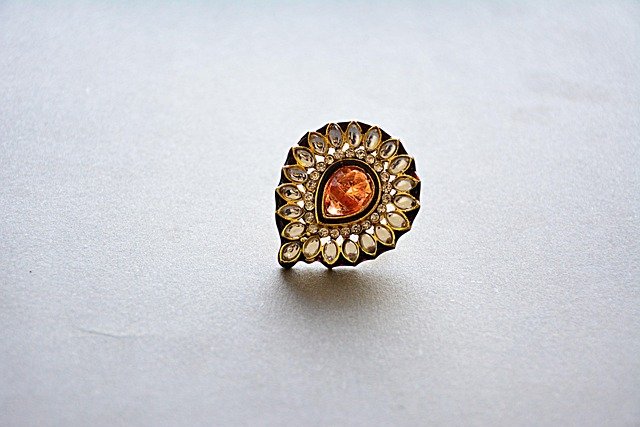Antique Rings: A Journey Through Time and Craftsmanship
Antique rings are captivating pieces of jewelry that carry with them the stories and craftsmanship of bygone eras. These treasured items, typically over 100 years old, offer a unique blend of history, artistry, and romance. From intricate Victorian designs to bold Art Deco styles, antique rings showcase the evolving aesthetics and techniques of jewelry making throughout the centuries. Their enduring appeal lies not only in their beauty but also in their ability to connect us with the past, making them highly sought after by collectors, historians, and those seeking a truly one-of-a-kind piece of jewelry.

How do Victorian-era rings differ from other antique styles?
Victorian-era rings, produced during Queen Victoria’s reign from 1837 to 1901, are known for their romantic and sentimental designs. This period saw a surge in jewelry production due to the industrial revolution and the discovery of new gemstone sources. Victorian rings often feature intricate metalwork, such as filigree and engraving, and incorporate symbols of love and nature. Gemstones like diamonds, sapphires, and rubies were popular, as were materials like jet and hair for mourning jewelry. The Victorian era can be divided into three distinct periods – Romantic, Grand, and Aesthetic – each with its own characteristic styles and motifs.
What types of gemstones are commonly found in antique rings?
Antique rings showcase a wide variety of gemstones, reflecting the availability and preferences of their time. Diamonds have been a popular choice for centuries, particularly in engagement rings. However, colored gemstones also play a significant role in antique jewelry. Sapphires, rubies, and emeralds were highly prized, often set alongside diamonds or as central stones. Other gemstones commonly found in antique rings include:
-
Pearls: Valued for their luster and symbolism of purity
-
Opals: Popular during the Art Nouveau period for their play of color
-
Amethysts: Favored in Victorian and Edwardian jewelry
-
Garnets: Often used in Georgian and Victorian rings
-
Turquoise: Frequently used in Victorian and Art Nouveau designs
The cut of these gemstones often differs from modern styles, with old mine cuts, rose cuts, and cabochons being particularly common in antique pieces.
How can one authenticate and value an antique ring?
Authenticating and valuing an antique ring requires expertise and careful examination. Several factors contribute to the assessment:
-
Age: Determining the exact period of the ring is crucial for authentication.
-
Materials: The types of metals and gemstones used can indicate the era and value.
-
Craftsmanship: The quality and techniques of the ring’s construction are important indicators.
-
Hallmarks: Many antique rings bear hallmarks that can help identify their origin and maker.
-
Condition: The overall condition of the ring, including wear and any restoration, affects its value.
-
Rarity: Unique or rare designs command higher prices.
Professional appraisers and gemologists use specialized tools and their knowledge of historical styles to authenticate antique rings. They may examine the ring under magnification, test the metal content, and assess the gemstones. For valuable or significant pieces, obtaining a certificate of authenticity from a reputable expert is advisable.
What are the challenges of caring for and wearing antique rings?
While antique rings are beautiful and meaningful pieces of jewelry, they do require special care and consideration:
-
Fragility: Many antique rings are more delicate than modern jewelry due to age and wear.
-
Gemstone security: Old settings may not be as secure as contemporary ones, risking stone loss.
-
Metal softness: Antique rings often use softer metals that are more prone to scratching and denting.
-
Cleaning limitations: Harsh cleaning methods can damage delicate antique pieces.
-
Sizing issues: Resizing antique rings can be challenging and may affect their value or integrity.
To care for an antique ring, gentle cleaning with a soft brush and mild soap is recommended. Avoid ultrasonic cleaners or harsh chemicals. Regular inspections by a jeweler familiar with antique pieces can help maintain the ring’s condition and catch any potential issues early. When wearing antique rings, it’s wise to remove them during activities that might risk damage, such as sports or heavy housework.
Antique rings offer a unique opportunity to wear a piece of history on your finger. Their exquisite craftsmanship, historical significance, and timeless beauty make them cherished possessions for many. Whether you’re drawn to the romantic allure of Victorian designs, the bold geometry of Art Deco pieces, or the delicate intricacy of Edwardian rings, there’s an antique ring to suit every taste and style. As with any valuable piece of jewelry, proper care and authentication are essential to ensure that these treasures continue to tell their stories for generations to come.






